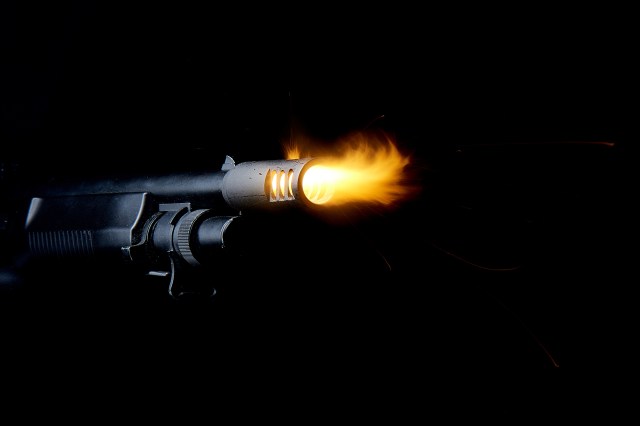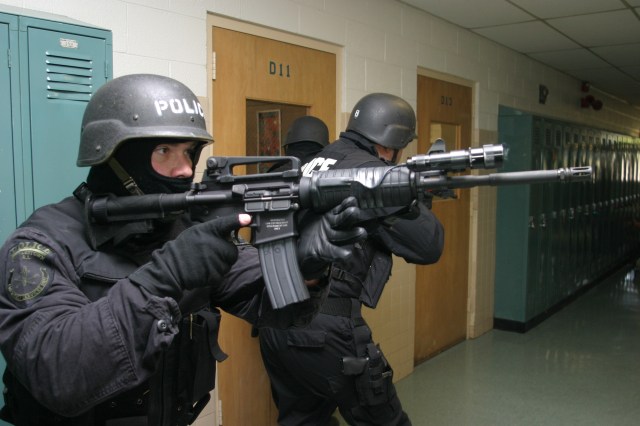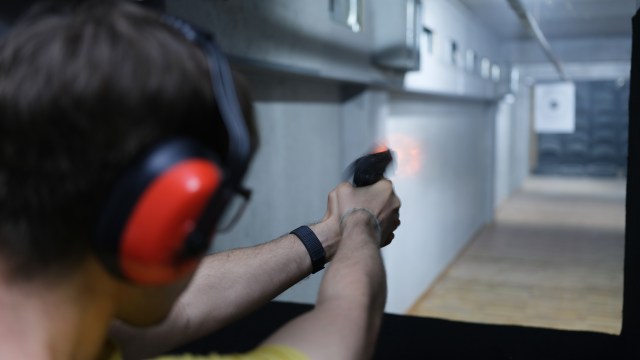Enhance accuracy – without ‘line of sight’
In the field of gunshot detection, accuracy is paramount. However, there are multiple dimensions to accuracy, which include detecting actual gunshots effectively – and almost more importantly – avoiding false positives. SDS’s technology, originally developed for military sniper detection, excels in both aspects. A crucial capability that distinguishes SDS from other systems is its near-infrared detection employed to verify acoustic data.

Near-infrared represents invisible energy emitted during weapon discharge. This energy travels outward from the blast, with the distance covered being dependent on the caliber size of the round. Sensors can detect this energy as it moves away from the source or redirects after bouncing off objects. Infrared detection not only increases accuracy but also acts as a failsafe to mitigate the risk of triggering armed SWAT response to nonexistent gunshots—a risk present in acoustic-only detection solutions.
SDS’ capability to detect the infrared signature from small-caliber weapons, such as a .22 at 40 feet, eliminates the need for direct line of sight to the weapon or the muzzle blast. Even when blocked from the sensor’s field of view, SDS sensors can still detect infrared energy traveling through their range. As infrared energy passes anywhere through the field of view within the detection range of the sensors, our gunshot detection technology accurately detects and reports the blast of a gun with absolutely no line of sight needed.
False positives cause ‘alarm fatigue’ – or worse, a SWAT response
Alarm fatigue is a widespread concern in various security contexts, driven by the high incidence of false alarms that lead to desensitization among responders. In both swatting scenarios and false positives from gunshot detection systems, the abundance of false alarms can contribute to alarm fatigue. This desensitization often results in delayed or weakened response to real emergencies, potentially escalating the severity of threat incidents.

Swatting, the act of falsely reporting an ongoing critical incident to emergency services to purposely trigger an aggressive armed response by SWAT teams, has become an increasing problem across the globe, so much so that the FBI is now tracking these incidents in a centralized database to study them. The high frequency of these hoaxes puts undue stress on law enforcement resources and poses potential risk to innocent parties. In one case in Massachusetts, an officer experienced an accidental gun discharge when responding to a false active shooter report.
Similarly, false positives from gunshot detection systems, when the system erroneously identifies a gunshot, can put first responders on edge, causing unproductive mobilization, anxiety, and real risk. In both cases, the recurrence of false alarms erodes the trust and credibility of modern security systems and methods, potentially hindering the effective response to genuine emergencies.
As both real and false active shooter incidents continue to rise, organizations considering gunshot detection to protect their facilities must take the risks of false positives seriously in this context. This is a very different selection process that should require intense vetting of the technology. To combat the issue of false positives, it’s essential for developers of gunshot detection systems to continuously strive to improve the accuracy of their systems. By reducing false positives and enhancing threat detection and reporting accuracy, this technology can provide emergency responders with reliable, real-time information that assists in appropriate decision-making during high-stress situations, ultimately mitigating the impact of alarm fatigue and bolstering public safety.
Technology accuracy is critical to life safety
Born on the battlefields in a post 9/11 world, this technology is still in use by the military to detect not just the gunshot of a sniper, but the location as well. Unrivaled combat-tested solutions safeguard lives—be it on the battlefields of Afghanistan or within schools throughout America. Organizations can trust SDS for the most precise and reliable gunshot detection systems in the industry, ensuring top performance when it’s crucial, even without a line of sight. This advanced level of accuracy offers organizations greater confidence in the detection system’s ability to identify real threats and reduce response times. Equally important, it helps confirm that no shots have been fired during false active shooter reports, such as swatting incidents, adding an extra layer of trust in the system’s performance.

